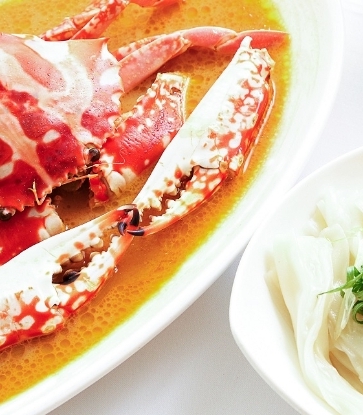The question of how a restaurant gets recognised by the Michelin Guide is a perennial question among chefs and restauranteurs in the Singapore dining scene. More light was shed on the assessment criteria that the inspectors, who dine out anonymously and pay for their meals, use to rate their dining experience at the annual MICHELIN Guide Singapore Trade Seminar yesterday.
Held two days after the revelation of the full list of the MICHELIN Guide Singapore 2018 recipients, the seminar saw five food and beverage professionals discuss the topic: A discourse on getting it right — why do some restaurants have stars and others don’t?
About 250 people, from corporates, restauranteurs to chefs, attended the seminar, which was held at Regent Singapore.
The panelists are Michael Ellis, international director of Michelin Guides, Philipp Blaser, vice president of food and beverage at Four Seasons Hotels & Resorts (Asia Pacific), Alvin Leung, chef-owner of three-Michelin-starred Bo Innovation in Hong Kong, Lam Ming Kin, chef-owner of one-Michelin-starred Longtail in Taipei and Yeo See Kiat of Chaine des Rotisseurs, an international gastronomy association.
Here are the five key criteria and what the panelists have to say about each of them.
Chefs in Singapore may not have the luxury of using much locally-grown seasonal ingredients — such as how Lam uses mangoes and tuna from all over Taiwan at Longtail, but there is still no excuse for seeking out extraordinary produce.
Tan Ken Loon, chef-owner of seafood restaurant The Naked Finn, goes the extra mile by traveling to cities such as Hokkaido, Brussels and Hong Kong to source for seafood directly instead of relying on suppliers. Tan has since started an import business that has brought in more than 200 varieties of seafood, with a focus on sustainable sources. He says: “For us, it is a pursuit to discover more seafood species, as it is challenging for us to get ingredients in Singapore. We want to show that there are many other seafood species out there that you can get good value for.”
While using fresh produce is essential, it is not imperative for restaurants to use premium and luxe ingredients, such as truffle, foie gras and turbot, in order to get the attention of inspectors. “I want to debunk this myth,” Ellis says. “I have seen a three-starred restaurant use beets and smoked eel in its menu. Making the simple sublime will get our attention.”

Leung stresses the importance of adopting a practical approach when designing stand-out dishes that are also aligned to the restaurant’s identity and business. He says: “There has to be a balance in showcasing the ingredients, but one needs to be practical and ensure that business can remain sustainable. If you use too many luxury ingredients, you are just featuring luxury.”
He breaks down the flavours in his dishes to fit into the various categories: sweet, sour, bitter, spicy, salty and umami, and thinks about texture. “You can come up with a practical dish by playing with the ingredients and moving colours and textures around,” he says.
Besides the quality of food, cooking techniques also matter. Yeo says: “As a diner, my expectations of a restaurant depend on how much I am paying for a meal. For a Michelin-starred restaurant there has to be good attention to details down to the kitchen-to-table serving time so that the food does not arrive cold at the table.”

When it comes to chefs with colourful personalities, one need not look further than Leung, who is known for his quirky “demon chef” moniker and his “X-treme Chinese cuisine” in his BO restaurants in Hong Kong and Shanghai. How does he toe the line of expressing the right amount of personality in his cuisine? Leung says that the food that he serves is people’s interpretation of his personality. He says: “I have to alter the personality of the dishes to cater to the customers whom I am cooking for.”
How do restaurants, which are managed by organizations, bring forward their personalities while staying aligned to a corporate identity?
Blaser, who oversees more than 100 dining establishments in the Four Seasons Hotels Group — that have 10 Michelin stars among them, ventures that fostering a culture to fail can help. He explains: “We need to create a culture of safety that it is okay to make mistakes and experiment with the style of food and service.”

Yeo interprets a value-for-money meal as “coming out of a restaurant with a memorable experience”. He says: “Value is having a wow factor. It should include a total experience, from the attentiveness of the service staff, ambience to food.”
Chef-restauranteur Beppe de Vito, who runs the IlLido Group that operates a diverse range of establishments from casual restaurants to one-starred Braci, believes that all eateries, regardless of their target audiences, should focus on making customers happy and has to be treated the same way.
He says the customers frequent his casual restaurants during lunchtime as it meets their budgets, but they also go to his upmarket restaurants when they need to entertain.

Ellis points out that the main reason behind the uncomfortable exercise of inspectors taking stars away is the lack of food consistency. Drawing his experience as a former commis cook, he acknowledges the reality of restaurants having bad days when staff do not show up or suppliers fail to deliver.
He says: “That’s why our inspectors visit a restaurant two or three times, with different inspectors visiting each time, before making a decision.”
However, a chef’s work is no longer restricted in a kitchen these days. Today, travelling for events and overseas cooking collaborations is par for the course. How do chefs ensure consistency while they are away?
Lam points out that cooking technology such as the combi oven and sous vide machine has helped to plug the gap, but that is not the end-all solution. He says: “Cooking involves craftsmanship and a human touch. There is no fast solution to this. You need to spend time with your cooks and train them step-by-step.”

Do restaurants, which do fewer covers, stand a higher chance of getting Michelin stars?
Ellis says that that is not necessarily true. He cites two examples: Three-Michelin-starred Le Bernardin in New York City, which does high volume of haute cuisine. Another example is the one-Michelin-starred Le Jules Verne in the Eiffel Tower in Paris, which is open throughout the year.
Besides food consistency, Blaser adds that restaurants should not neglect the consistency of financial management. Chefs and restauranteurs need to engineer the menu to factor in aspects such as costs of the dish, and analyze data to determine if a dish should be dropped or continued in order to optimize business.
Sharing an anecdote that was shared to him by Will Guidara, co-owner of three-Michelin-starred Eleven Madison Park in New York, he says: “One needs to macro-manage the restaurant’s financial statements 95 per cent of the time. The last five per cent is spent on pouring a glass of wine or serving guests in-house bar snacks, instead of packets of nuts, to make their day. It shows compassion and passion and gives a fantastic dining experience.”
RELATED: MICHELIN Guide Singapore 2018: A Night Of Surprise And Relief For Restaurants























